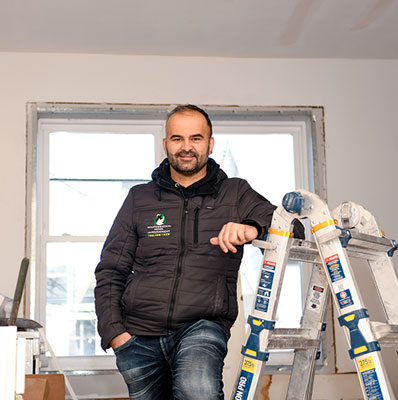Cutting-edge Technologies Improve Radiation Efficiency & Accuracy

August 30, 2023
Precision is paramount when treating tumors, nerve disorders and other challenging and life-altering conditions inside the brain. But it’s even more extraordinary when treatment can be performed in a noninvasive, painless and safe manner, allowing patients to seamlessly return to everyday living.
The Dr. Robert H. and Mary Ellen Harris ZAP-X Center for Noninvasive Neurosurgery at the Hackensack Meridian Neuroscience Institute at Jersey Shore University Medical Center is the world’s first team to combine ZAP-X® Gyroscopic Radiosurgery® with Synaptive’s Brain-Only Silent MRI, made possible by a generous donation from Mary Ellen Harris and the Golden Dome Foundation. Bringing these technologies together provides the most precise, accurate and rapid treatment possible for:
- Benign and cancerous brain tumors, including brain metastases, meningiomas, gliomas, recurrences, pituitary adenoma and acoustic neuromas
- Other intracranial disorders such as trigeminal neuralgia and arteriovenous malformations
ZAP-X’s precision beam reduces radiation exposure to healthy brain tissue. It allows doctors to maximize cognitive function preservation and expand the potential to pursue complex cases and advanced stereotactic radiosurgery (SRS) treatments.
“This radiation is strong, sharp and precise. The combination of these tools allows us to point the radiation at just the target tumor or lesion, avoiding almost all surrounding tissue,” says Timothy Chen, M.D., medical director of the Central Nervous System Radiation Oncology Program at Jersey Shore University Medical Center and medical director of the Proton Therapy Department of Radiation Oncology at Hackensack Meridian Health.
Next Step in Evolution
ZAP-X represents the first new SRS platform dedicated to the brain in almost a half-century. Designed exclusively for treatment within the skull and neck, ZAP-X can avoid the trade-offs necessary with full-body radiotherapy systems that aren’t as precise.
Here’s how it works:
- A linear accelerator (a machine that uses electricity to create a stream of fast-moving subatomic particles) creates a combination of beams and positions that reduce radiation exposure to healthy brain cells as well as sensitive areas such as the optic pathways, brain stem and possibly previously treated areas.
- By integrating Synaptive Brain-Only MRI, clinicians gain real-time imaging results that empower them to clearly identify all vital structures and make sure radiation beams travel only to the intended site.
- After patients are placed on the treatment table, real-time images are taken confirm the treatment accuracy.
“Every beam gets instant verification to ensure the dose delivery accuracy while pinpointed to the right place,” Dr. Chen says. “We’re the first in the world to have this combination available together in the same physicallocation.”
Benefits of ZAP-X and Synaptive MRI Imaging
The combination of ZAP-X and Synaptive MRI imaging provides a number of benefits.
Fewer Side Effects: These advanced technologies mean fewer side effects for patients compared with traditional radiotherapy.
Fewer Risks: These technologies provide the ability to avoid open surgery, once a mainstay to treat the same tumors and conditions ZAP-X can tackle.
Environmental Benefits: “It’s the next step in evolution,” says Shabbar Danish, M.D., chair of the Department of Neurosurgery at Hackensack Meridian Neuroscience Institute at Jersey Shore. He notes that ZAP-X is more environmentally friendly than earlier systems using cobalt, which can shed radioactive material when mined. “It’s our small contribution to make the Earth a better place for people and the environment.”
Speed of Care: Traditional radiotherapy requires patients to schedule several separate appointments to complete treatment planning and imaging before undergoing radiation. But this pair of technologies provides a quick path from diagnosis to treatment, sidestepping a lengthy wait that might jeopardize treatment success. “Our vision here was to eliminate extra visits for patients,” Dr. Danish says. “We take planning CT and MRI images on the same day as the consultation, making it easier and more streamlined for patients. No other program is set up that way.”
Added Comfort: ZAP-X enables patients to avoid wearing the cumbersome, uncomfortable head frame needed with other types of brain radiation. Since the ZAP-X machine is self-shielded—meaning radiation can’t escape—patients are also allowed to have clinicians in the room with them during treatments to comfort them.
Painless Procedure: With no anesthesia, scalpels or incisions required, the painless outpatient treatment sessions typically last only 15 to 20 minutes.
“With this machine, we can literally sit next to the patient. They can hear and see me, so they feel a lot more comfortable,” Dr. Chen says. “Patients can even play music inside.”
Next Steps & Resources:
- Meet our sources: Timothy Chen, M.D., and Shabbar Danish, M.D.
- To make an appointment with a ZAP-X team near you, call 800-822-8905 or visit our website.






